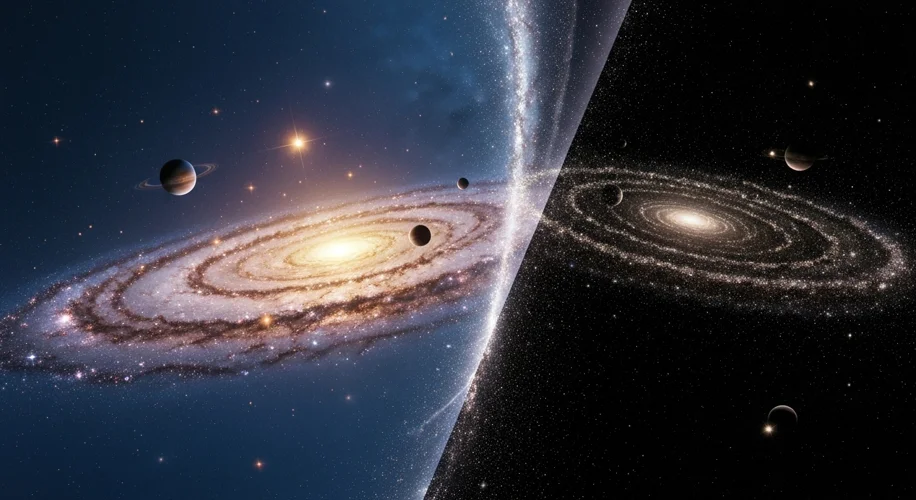Imagine a universe where everything we know has a perfect, microscopic opposite. Not just a reflection in a mirror, but a whole other form of existence, made of ‘mirror matter’ or ‘dark matter.’ Scientists are exploring this mind-bending idea, and while it’s still largely theoretical, it raises fascinating questions about the fundamental nature of reality and potential cosmic risks.
Did you know that the vast majority of our universe isn’t made of the stuff we can see and touch? We call the ‘normal’ matter stars, planets, and us – baryonic matter. But that only accounts for about 5% of the universe’s total mass and energy. The rest is thought to be dark matter (about 27%) and dark energy (about 68%). We know dark matter is out there because of its gravitational effects on galaxies and light, but we can’t see it or interact with it directly.
Now, what if dark matter isn’t just some inert substance, but a complex ‘mirror’ version of our own universe? Some theories suggest that just as we have particles like electrons and protons, there could be a parallel set of ‘mirror’ particles – mirror electrons, mirror protons, and so on. These mirror particles would interact with each other and form ‘mirror atoms’ and even ‘mirror stars’ and ‘mirror galaxies,’ all completely invisible to us.
This is where things get speculative, but also incredibly intriguing. What if these mirror worlds could interact with our own in some way? One idea is that under extreme conditions, like those found inside neutron stars, mirror matter could transform into regular matter, or vice versa. This transformation could release a tremendous amount of energy.
Why does this matter to us? Well, some scientists have pondered if a sudden, large-scale conversion of mirror matter to regular matter could happen. The energy released could potentially be catastrophic, leading to events like a ‘Big Rip’ or a Big Bounce, or even creating conditions that could be detrimental to life as we know it.
It’s important to remember that this is highly theoretical. We don’t have direct evidence of mirror matter, let alone a way to observe its potential interactions. It’s a concept born from our attempts to understand the universe’s biggest mysteries, like what dark matter actually is.
However, as a scientist, I find these kinds of ‘what if’ scenarios incredibly valuable. They push the boundaries of our understanding and encourage us to think about possibilities we might otherwise overlook. Exploring these extreme theoretical scenarios, even if they remain in the realm of speculation, helps us refine our models of the universe and consider a wider range of potential cosmic phenomena.
It’s a humbling reminder of how much we still have to learn about the cosmos. While the idea of ‘mirror life’ or a cosmic doppelgänger might sound like science fiction, it’s rooted in genuine scientific inquiry into the nature of dark matter and the universe’s hidden architecture. It’s a testament to human curiosity that we can even conceive of such possibilities.

